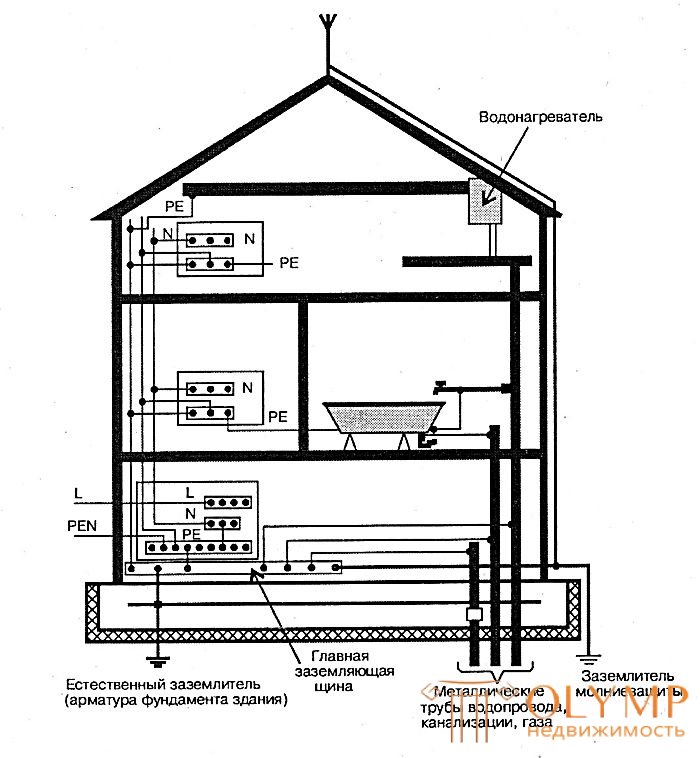
Practical schemes of grounding systems.
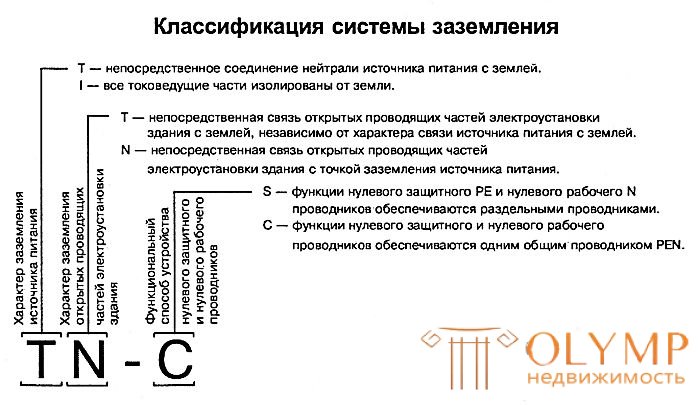
The following grounding systems exist: TN-C, TN-S, TN-CS, TT, IT
In Russia, a system similar to the TN-C is currently used, in which the open conductive parts of an electrical installation (housings, electrical equipment housings) are connected to a grounded source neutral with a combined zero protective and working conductor PEN, i.e. “Zeroed”.
TN-C
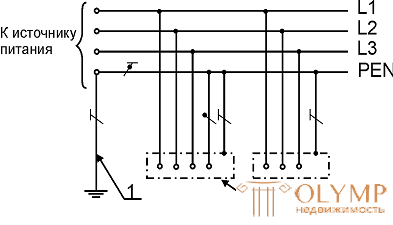
This system is relatively simple and cheap. However, it does not provide the necessary level of electrical safety.
Systems TN-S, and TN-CS are widely used in European countries - Germany, Austria, France, etc.
TN-S
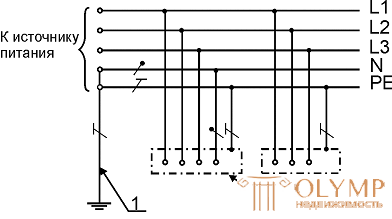
In the TN-S system, all exposed conductive parts of a building’s electrical installation are connected by a separate neutral protective conductor PE directly to the power supply grounding device. 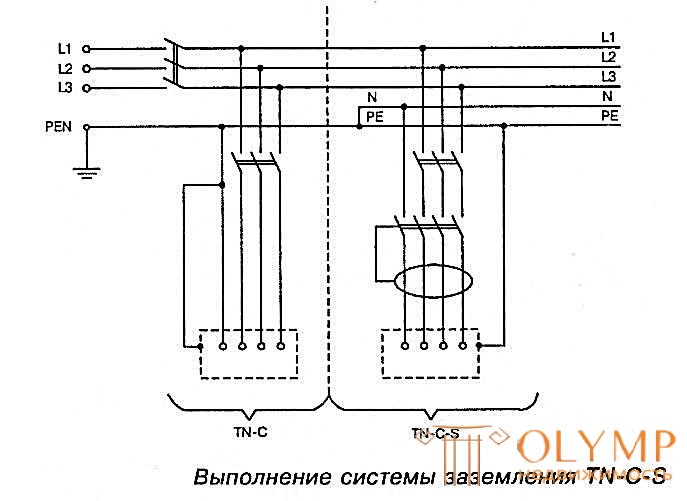
The most promising for our country is the TN-CS system, which allows, in combination with the widespread introduction of UZO, to ensure a high level of electrical safety in electrical installations without their fundamental reconstruction.
Attention!
In electrical installations with earthing systems TN-S and TN-CS, electrical safety of the consumer is provided not by the systems themselves, but by protective cut-off devices (RCD) operating more effectively in conjunction with these earthing systems and the potential equalization system.
Details about the RCD.
What protects the RCD.
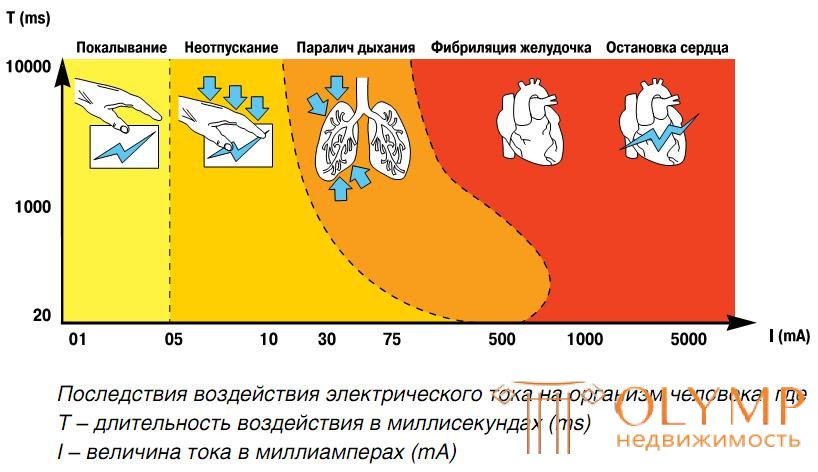
Actually the grounding systems themselves (without RCDs) do not provide the necessary safety. For example, in the case of breakdown of insulation on the body of an electrical device or any device, in the absence of a RCD, this consumer is disconnected from the network by overcurrent protection devices - automatic switches or fusible links.
The presence of metal enclosures, fittings, etc., connected to the PE conductor on the object increases the danger of electric injury, since in this case the probability of formation of the “conductive conductor - human body - earth” circuit is much higher. Only the RCD protects against direct contact.
Contact with live parts or parts of live electrical installations may cause an electric shock. For example, a current of only 20–25 mA paralyzes a person’s muscles. With a current of 50-100 mA, the heart starts to work arrhythmically, and after 1-2 seconds it stops beating altogether. Stops and breathing. To save the life of the victim, during this short period of time, it is necessary to tear him away from the source of electric shock, give first aid and give artificial respiration.
Application of RCD in the grounding system TN.
To date, most electrical installations in our country work with a grounding system similar to TN-C. In such an electrical installation, if the insulation breaks down on the case of an electric receiver, if this case is not grounded (for example, a refrigerator or a washing machine on an insulating base), the RCD connected to the power supply of the electric receiver will not work because there is no leakage current circuit - there is no differential differential) current. At the same time on the case of the electric receiver will be a dangerous potential relative to the earth.
In this case, when a person touches a case, an electrical receiver and a current through the body flows to the ground that exceeds the rated differential current, the RCD reacts and disconnects the electrical installation from the network, as a result, the person’s life will be saved. This means that in the considered case, from the moment the insulation breaks down and the electric potential appears on the body of the electric receiver until the defective circuit is disconnected from the network, there is a period of potential electrical shock hazard.
Thus, in electrical installations with the TN-C earthing system, the use of RCDs is also justified, since this device and in such electrical installations provides effective protection against electrical injury. Electrical installations with earthing systems TN-S, TN-CS, in this aspect have a significant advantage: in a similar situation - in case of insulation breakdown on the case, the RCD will instantly disconnect the power supply, since all the buildings have a reliable connection to the protective conductor.
Connecting PE protective conductors
and equipotential bonding.
It is necessary to clarify the rules for connecting the protective PE conductor. The combined zero and working conductor PEN is divided into zero protective PE and zero working N conductors in the input device (see last pic.)
Zero working and zero protective conductors are not allowed to be connected under the common contact terminal. The meaning of this requirement is the need, in order to ensure the electrical safety conditions, to maintain the connection of the protective conductor to the ground in case of the destruction (burnout) of the contact clip. 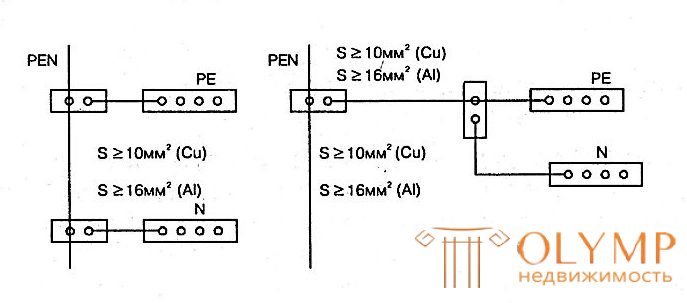
In fig. Examples of how to make this connection in floor or flat panels are shown.
In order to ensure electrical safety conditions in a specific electrical installation, a potential equalization system is important. The rules for performing a potential equalization system are defined by the IEC 364-4-41 standard and the OLC (7th ed.). These rules provide for the connection of all conductors to be grounded to a common bus. 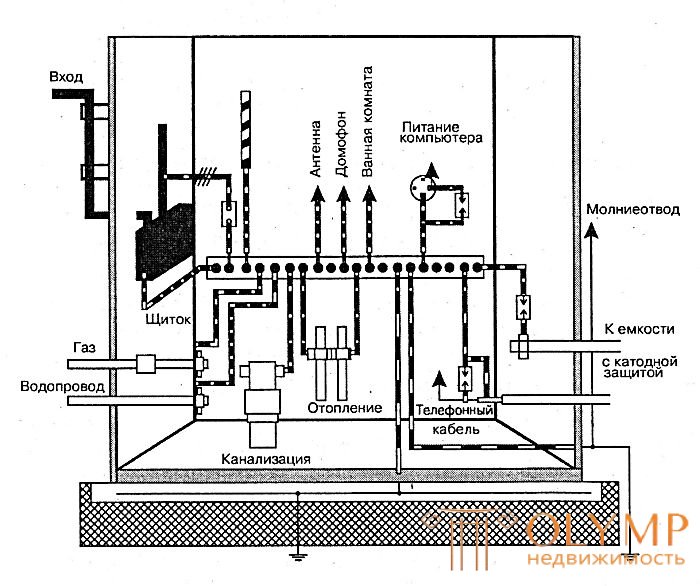
This solution allows you to avoid the flow of various unpredictable circulating currents in the grounding system, causing the occurrence of a potential difference on the individual elements of the installation. 
In fig. The example of the potential equalization system in the electrical installation of a residential house is given.
Recently, with an increase in the equipment of modern residential buildings and industrial buildings with various electrical appliances and the constant development of their electrical installations, the phenomenon of accelerated corrosion of water supply and heating systems pipelines has become increasingly common. In a short time - from six months to two years - on the pipes of both the underground and air pads, point fistulae are formed, rapidly increasing in size. The reason for the accelerated pitting corrosion of pipes in 98% of cases is the flow of stray currents through them.
The use of RCDs in combination with a correctly performed potential equalization system makes it possible to limit and even prevent leakage currents from flowing through the conductive elements of the building structure, including pipelines.
Что бы оставить комментарий войдите
Комментарии (0)